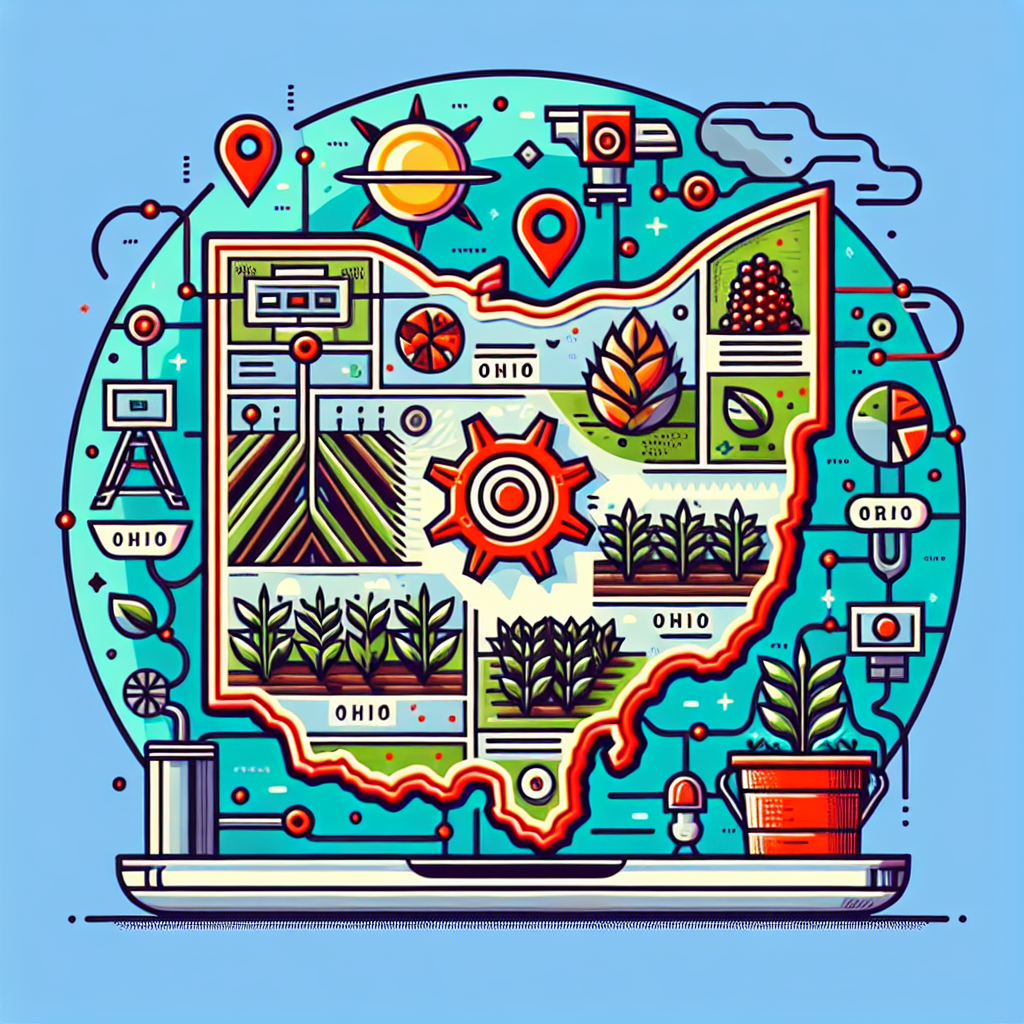II. Understanding Gardening Zones in Ohio
Gardening zones are geographical regions characterized by specific climate conditions that affect plant growth and survival. In Ohio, these zones are crucial for determining which plants are suitable for cultivation based on factors like temperature, rainfall, and soil type. The United States Department of Agriculture (USDA) has developed a system of Hardiness Zones to help gardeners identify the most appropriate plants for their region.
Ohio's USDA Hardiness Zones
Ohio falls into USDA Hardiness Zones 5 and 6, with Zone 5 covering the northern part of the state and Zone 6 encompassing the southern regions. Each zone has its own set of temperature ranges that dictate the types of plants that can thrive in that specific area.
Climate Characteristics Affecting Gardening Zones
The climate in Ohio varies from region to region, influencing the gardening zones within the state. Factors like proximity to the Great Lakes, elevation differences, and urban heat islands can create microclimates that impact plant growth. Understanding these climate characteristics is essential for successful gardening in Ohio.
III. Factors Affecting Gardening Zones in Ohio
Various factors contribute to the delineation of gardening zones in Ohio, including temperature variations, soil types, and microclimates.
Temperature Variations
Ohio experiences diverse temperature fluctuations throughout the year, with cold winters and warm summers. These temperature variations determine the plant species that can thrive in different zones, as some plants are more cold-hardy while others prefer warmer conditions.
Soil Types and Conditions
The soil composition in Ohio varies widely, with different regions having distinct soil types ranging from sandy loam to clay. Understanding the soil conditions in your gardening zone is crucial for selecting plants that can adapt to the specific soil structure and nutrient levels.
Microclimates Within Zones
Microclimates are small-scale areas within a zone that have unique climate conditions due to factors like proximity to bodies of water, buildings, or vegetation. These microclimates can create pockets of warmth or coolness that influence plant growth and may allow for the cultivation of plants that are not typical for that zone.
IV. Case Study: Successful Gardening Practices in Different Zones
Case Study 1: Vegetable Gardening in Northern Ohio (Zone 5)
In Zone 5 of Ohio, gardeners face colder temperatures and a shorter growing season. Successful vegetable gardening in this zone requires early plantings of cold-hardy crops like kale, carrots, and radishes. Utilizing season extenders such as row covers and cold frames can help protect plants from frost and allow for a longer harvest.
Case Study 2: Flower Gardening in Southern Ohio (Zone 6)
Zone 6 in Ohio offers a milder climate with longer growing seasons, making it ideal for a wider variety of flowers. Cultivating perennials like coneflowers, daylilies, and black-eyed Susans can result in vibrant, long-lasting blooms throughout the warmer months. Proper soil preparation and mulching are essential for maintaining flower beds in this zone.
Expert Insights on Optimizing Plant Growth in Specific Zones
Horticultural experts emphasize the importance of researching and selecting plant varieties that are well-suited to the specific gardening zone. By choosing plants that match the zone's temperature and soil conditions, gardeners can promote healthy growth and minimize the need for excessive maintenance.
V. Importance of Choosing Plants According to Zones
Matching Plants to the Appropriate Zone
Selecting plants that are compatible with the designated gardening zone is key to establishing a thriving garden. Plants that are well-adapted to the local climate are more likely to flourish and resist pests and diseases.
Benefits of Selecting Zone-Appropriate Plants
Choosing zone-appropriate plants offers numerous benefits, including reduced water consumption, minimal need for fertilizers and pesticides, and overall healthier plants. By working with nature rather than against it, gardeners can create sustainable and resilient gardens.
Challenges of Growing Out-of-Zone Plants
Attempting to grow plants that are not suited to the local gardening zone can result in poor growth, increased susceptibility to diseases, and higher maintenance requirements. It is essential to respect the natural limitations imposed by the climate and soil conditions of each zone.
VI. Conclusion
Understanding gardening zones in Ohio is fundamental to achieving gardening success. By aligning plant selections with the specific requirements of each zone, gardeners can optimize plant growth, increase biodiversity, and create visually stunning landscapes that thrive in Ohio's unique climate.
VII. Call to Action
Explore your gardening zone in Ohio and connect with local horticultural experts to deepen your understanding of zone-specific gardening practices. By exchanging knowledge and experiences with fellow gardeners, you can enhance your gardening skills and contribute to the beauty and sustainability of Ohio's horticultural landscape.
Topics




